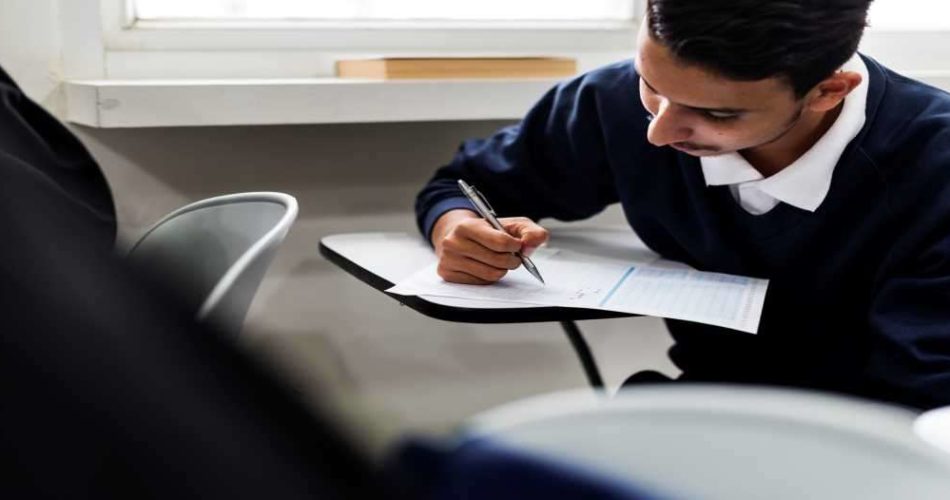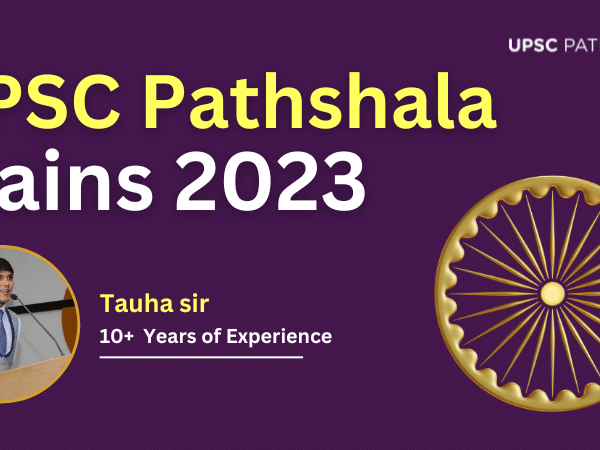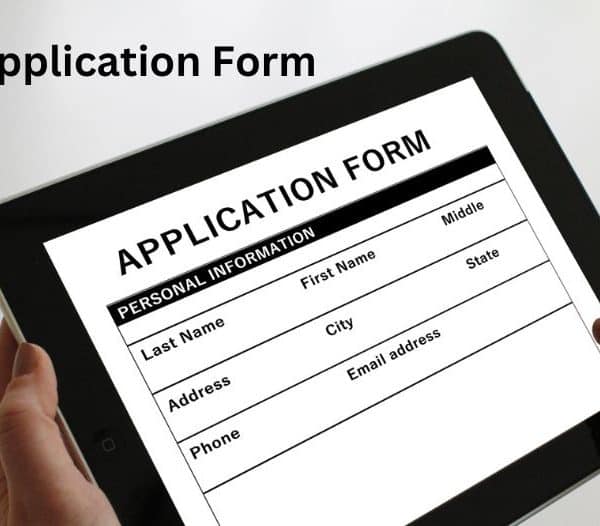The COVID-19 outbreak in the country has had a significant impact on UPSC IAS aspirants’ preparation. The majority of aspirants choose to participate in various test series and mock tests to assess their preparation prior to the exam. The pandemic situation, on the other hand, has had a significant impact on the planning process.
Previous year’s papers can be extremely useful at this point. Candidates can use these papers to assess their own preparation and examine their exam strategy.
To pass the Civil Services Exam, candidates must have the right mindset, put in a lot of effort, be honest, and be committed. Nonetheless, one’s immense effort will only bear fruit if it is directed in the right direction, which requires knowledge of the UPSC (IAS) Prelims Exam question pattern.
Last 25 Years UPSC Prelims Question Papers with Answers
Previous year papers are a promising path to learn about the structure of questions asked in both the UPSC Prelims and Mains exams. As you read this article, you’ll get a sense of how different subjects are weighted and how many static and complex questions have been asked over time.
Aspirants can check their pace of exam preparation by solving previous UPSC Prelims Previous Years Papers. Knowing the importance of each subject and the types of questions asked from each topic will assist them in determining what needs to be studied and what does not.
An aspirant should thoroughly understand the exam pattern for a higher success rate in the exam, and solving previous years’ papers will help aspirants assess their performance.
Also Read: UPSC Prelims 2022 Syllabus: Detailed Prelims Syllabus to Ace UPSC CSE
IAS Prelims General Studies Solved Question Paper 2010
#A cuboid has six different coloured sides. The red side is the polar opposite of the black side. The blue side is next to the white side. The brown side is next to the blue side. The red side is on the bottom. Which of these colours is the polar opposite of brown?
A.Red
B.Black
C.White
D.Blue
Answer. C
#In 1793, a regulation stripped the District Collector of his judicial powers and replaced him with a collecting agent only. What was the rationale behind this regulation?
A.Lord Cornwallis believed that if the District Collector was not burdened with other tasks, his efficiency in collecting revenue would skyrocket.
B.Lord Cornwallis believed that judicial power should be vested in Europeans, while revenue collection in the districts could be delegated to Indians.
C.Lord Cornwallis was concerned about the District Collector’s concentration of power, believing that such absolute power in one person was undesirable.
D.Lord Cornwallis believed that the District Collector should only be a revenue collector because judicial work required a deep knowledge of India and a good legal education.
Answer.C
Two to Four
#What is the working principle of a cooling system (radiator) in a car?
- Only conduction
- Only convection
- Only radiation
- Both conduction and radiation
Answer. B
#A professor, a doctor, and a lawyer are among the five people in the group A, B, C, D, and E. A and D are both single and do not work. E is the husband of the married couple in the Group. B is A’s brother, but he isn’t a doctor or a lawyer. What is the name of the professor?
- B
- C
- A
- None of these
Answer. A
Five
#In one village, half of the residents have their own homes. Paddy is grown by one-fifth of the villagers. Literacy is present in one-third of the villagers. A quarter of the villagers are under the age of twenty-five. Then, which of the following statements is unquestionably correct?
- Everyone in the village who owns a home is literate.
- A number of villagers under the age of twenty-five are literate.
- Paddy is grown by a quarter of the villagers who have their own homes.
- Literacy is common among paddy farmers; half of them are literate.
Answer. B
Also Read: UPSC Prelims 2021 Question Paper and Answer Key: How to Prepare for Mains after Prelims?
IAS Prelims Polity Solved Question Paper 2011
#A regular government uses the “vote-on-account” provision, whereas a caretaker government uses the “interim budget” provision.
A “vote-on-account” only considers the government’s expenditures, whereas a “interim budget” considers both expenditures and receipts.
Which of the following statements is/are correct?
(a.) 1 only
(b.) 2 only
(c.) Both 1 and 2
(d.) Neither 1 nor 2
Solution (b)
Two to Four
#What special benefits does a religious sect/community get in India if it is designated as a national minority?
It has the authority to establish and run exclusive educational institutions.
The President of India automatically appoints a community representative to LokSabha.
It stands to gain from the Prime Minister’s 15-Point Plan.
Which of the following statements is/are correct?
(a.) 1 only
(b.) 2 and 3 only’
(c.) 1 and 3 only
(d.) 1, 2 and 3
Solution: C
#The withdrawal of funds from the Consolidated Fund of India must be approved by:
(a.) The President of India
(b.) The Parliament of India
(c.) The Prime. Minister of India
(d.) The Union Finance, Minister
Solution (b)
Five to Six
#The Union receives all revenues. Taxes and other receipts from the government for the conduct of government business are credited to the:
(a.) Contingency Fund of India
(b.) Public Account
(c.) Consolidated Fund of India
(d.) Deposits and Advances Fund
Solution c
#When the LokSabha fails to pass the annual Union Budget
(a.) The Budget is reworked and re-presented.
(b.) The RajyaSabha is asked to make recommendations on the Budget.
(c.) The Union Finance Minister is asked to resign;
(d.) The Prime Minister submits the Council of Ministers’ resignation.
Solution. d
Seven and Eight
#Which of the following is not a fundamental duty under the Indian Constitution?
(a.) To cast a ballot in a public election
(b.) To cultivate a scientific mindset
c.) To protect public property
(d.) To uphold and respect my Constitution’s ideals.
Solution. a
#Which of the following statements about the Finance Commission of India is correct?
(a.) It promotes foreign capital inflows for infrastructure development.
(b.) It makes it easier for the Public Sector Undertakings to distribute funds properly.
(c.) It ensures financial administration transparency.
(d.) None of the preceding statements (a), (b), or (c) are correct in this context.
Solution. d
Also Read: UPSC Prelims Cut Off Last 5 Years: Here’s the Total Marks & 2019, 2020, and 2021 Cut Off
2012-14 Prelims Questions and Answers
#What is the role of the Comptroller and Auditor General (CAG) in India, aside from ensuring that public funds are used efficiently and for the intended purpose?
When the President of India declares a national or financial emergency, the CAG exercises exchequer control on behalf of Parliament.
The Public Accounts Committee debates CAG reports on the ministries’ implementation of projects or programmes.
Investigating agencies can use information from CAG reports bringing charges against those who have broken the law while managing public funds.
CAG has certain judicial powers when it comes to auditing and accounting for government entities, including the ability to prosecute those who break the law.
Which of the following statements is/are correct?
(a) 1, 3 and 4 only
(b) 2 only
(c) 2 and 3 only
(d) 1, 2, 3 and 4
Solution c
Two and Four
#Consider the following propositions
The Public Accounts Committee of the House of Commons
consists of no more than 25 LokSabha members
examines the government’s appropriation finance accounts
investigates the report India’s Comptroller and Auditor General
Which of the following statements is/are correct?
(a) 1 only
(b) 2 and 3 only
(e) 3 only
(d) 1, 2 and 3
Solution (b)
#Which of the following are discretionary powers granted to a state’s governor?
submitting a report to India’s President for the purpose of imposing the President’s rule
Ministerial Appointments
Reserving for consideration by the President of India certain bills passed by the State Legislature.
establishing rules for the State Government’s operations
Using the code provided below, select the correct answer.
(A)1 and 2 only
(B)1 and 3 only
(C)2, 3 and 4 only
(D)1, 2, 3 and 4
Solution (b)
Also Read: Time Table for UPSC Preparation 2021-22: Step by Step Guide to Crack The UPSC Exam
Five and Six
#The Supreme Court of India has the authority to decide disputes between the Centre and the States.
advisory jurisdiction
appellate jurisdiction.
original jurisdiction
writ jurisdiction
Solution C
#The Supreme Court of India has the authority to increase the number of judges.
the President of India
the Parliament
the Chief Justice of India
The Law Commission
Solution (b)
Seven and Eight
#Which of the following are associated with ‘Planning’ in India?
The Finance Commission
The National Development Council
The Union Ministry of Rural Development
The Union Ministry of Urban Development
The Parliament
1, 2 and 5 only
1, 3 and 4 only
2 and 5 only
1, 2, 3, 4 and 5
Solution (c)
#Which of the following is/are the function/functions of the Cabinet Secretariat?
Preparation of agenda for Cabinet Meetings
Secretarial assistance to Cabinet Committees
Allocation of financial resources to the Ministries
1 only
2 and 3 only
1 and 2 only
1, 2 and 3
Solution C
Nine and Ten
#Who has the authority to begin the process of determining the nature and extent of individual or community forest rights, or both, under the Scheduled Tribes and Other Traditional Forest Dwellers (Recognition of Forest Rights) Act, 2006?
(a) State Forest Department
(b) District Collector/Deputy Commissioner
(c) Tahsildar /Block Development Officer / Mandai Revenue Officer
(d) Gram Sabha
Solution (d)
#How will the National Water Mission affect the country if it is properly and completely implemented?
Wastewater recycling will meet a portion of the water needs of urban areas.
Coastal cities with insufficient alternative water sources will be able to meet their water needs by implementing appropriate technologies that allow for the use of ocean water.
All Himalayan rivers will be connected to rivers in peninsular India, and farmers will be fully reimbursed for the costs of digging bore-wells and installing motors and pump-sets to draw groundwater.
(a) 1 only
(b) 1 and 2 only
(c) 3 and 4 only
(d) 1, 2, 3 and 4
Solution (b)
Also Read: What is Chipko and Appiko Movement? A Step to Save Our Mother Nature
Eleven and Twelve
#How does the National Rural Livelihood Mission aim to improve rural poor people’s livelihood options?
In rural areas, by establishing a large number of new manufacturing industries and agribusiness centres.
By bolstering self-help groups’ and providing opportunities for skill development
Farmers receive free seeds, fertilisers, diesel pump sets, and micro-irrigation equipment.
(a) 1 and 2 only
(b) 2 only
(c) 1 and 3 only
(d) 1, 2 and 3
Solution (b)
#The goal of the ‘JananiSurakshaYojana’ programme is to help people.
to encourage institutional deliveries
to provide monetary assistance
to the mother to cover delivery costs
to compensate for wage loss due to pregnancy and confinement
Which of the following statements is/are correct?
(a) 1 and 2 only
(b) 2 only
(c) 3 only
(d) 1, 2 and 3
Solution (a)
To solve more last year papers click here.
Online Preparation for UPSC
Millions of Indians aspire to be members of the Indian Administrative Service (IAS). The same is true for services such as the Indian Foreign Service (IFS), Indian Police Service (IPS), and others. A common exam called the UPSC Civil Services Exam is used to recruit for 24 services, including IAS, IPS, and IFS (CSE).
The Union Public Service Commission (UPSC) is the governing body in charge of the entire recruitment process.
Also Read: List of Tribes in India: How Many Tribes are there in India?
Stage One: Join UPSC Pathshala
Proper training and guidance can greatly improve your chances of passing the UPSC Civil Services Examination (CSE).
If you’re thinking about starting UPSC CSE preparation, we strongly advise you to combine your self-study efforts with UPSC Pathshala’s smart training.
Live Classes
Recorded Classes
Personal Mentorship
Textbooks and Study Materials
UPSC Pathshala Prelims Online Mock Test Series
UPSC Pathshala Mains Mock Test Series
UPSC Pathshala Mains Answer Writing Practise (AWP)
Interview Guidance etc.
Previous Year Questions
Previous Year Questions will not only help you figure out where you stand, but they will also give you a good idea of the type of questions asked in the UPSC CSE exam. This will allow you to fine-tune your preparation and re-adjust the relevant parts.
PYQs will assist you in mastering the skill of relevant studying. So, when you start studying for the exam from books, you’ll know which sections to focus on and which to ignore!
Make a Well-Thought-Out Study Strategy
After you’ve finished with the previous year’s question papers, go over the prelims and mains syllabus. Prepare a solid study plan after learning everything there is to know about the exam pattern. To efficiently cover the entire syllabus, set monthly, weekly, and daily goals.
Make small, attainable goals for yourself. So that you don’t forget what you’ve read, use the weekends to revise. This will assist you in concept development and retention.
Build a Strong Foundation
For each of the subjects, it is critical to have a solid foundation. It will assist you in expanding and scaling up your preparation strategy so that you can thoroughly cover the entire syllabus. Start with something simple like reading NCERT textbooks in Economy, History, Geography, Politics, and General Science. To gain a better understanding of the Indian and global demographics, practise using maps.
Read Newspapers
After that, you’ll find that reading newspapers is more enjoyable because you’ll be able to relate it to your theoretical knowledge. Make reading important newspapers such as The Hindu and The Economic Times a habit. At the very least, read the editorials on these pages as well as any important news stories that may be relevant to the exam.
Monthly magazines like Yojna and Kurukshetra can also help you expand your knowledge. They have excellent articles on current events as well as static areas. Make a list of key points that will help you support your answers.
Practice
Practice is the next step. Put in a lot of time and effort into your answer writing. Also, don’t forget to study for the CSAT; it’s a requirement, but you’ll need to get a score of at least 66 to advance to the Mains.
As a result, practise with mock tests. Join a good test prep programme that will cover the CSAT and GS exams. Because the UPSC CSE Prelims and Mains syllabuses are not separated, you can prepare for both at the same time.
However, starting in January or February, go into full Prelims mode and plan strategically.
Answer Writing on a Regular Basis
Students are encouraged to write one or two answers every day in order to improve their writing skills as well as their memory. Candidates who are preparing without coaching, in particular, should practise writing answers without fail.
Also Read: What is Urbanization and Its Effect on Society? An Important Topic for Upcoming UPSC Exam
Making Notes on a Regular Basis
Before the UPSC prelims and main examinations, students should develop the habit of taking simple notes for quick revision. Candidates who take their own notes improve their performance more than those who rely on market materials.
Preparation for Current Events
Students who are not receiving coaching should develop the habit of reading the newspaper every day and taking notes on what they read.
Students should listen to daily All India Radio (AIR) news analysis, as well as Lok Sabha TV and Rajya Sabha TV debates, for news analysis. This type of analysis will provide in-depth knowledge of current events.
Analysis of Results
Candidates should evaluate their study preparation on a regular basis. To do so, students can purchase practise prelims and mains question papers from the market and begin solving them. It will assist them in determining their current level of preparation, allowing them to assess their strengths and weaknesses.
Choosing Optional Subject
When compared to his competitors, a candidate’s individual performance can vary on a wide range of factors. However, there may be Optional Subject(s) that do not yield the desired results despite candidates’ best efforts. A few Optional Subjects have been subjected to years of testing, either in terms of the questions asked or the grades awarded.
Many people who have earned a bachelor’s degree or a master’s degree in a subject choose the same subject as an option in the Civil Services Exam. This is an advantage because the candidates are already familiar with the subject and do not need to devote much time to studying for the optional.
Most of the popular IAS optional subjects mentioned above are included within the “Arts” subjects, which is where a bachelor’s degree in humanities can really help.
Investigate the contribution of the optional subject to the General Studies and essay papers of the Main exam on your own using past question papers and the syllabus.
Organize Time Wisely
A candidate should decide how much time he or she will be able to devote to studying an Optional Subject, in addition to their comprehension ability. Some candidates, who may be working while studying or studying at a university, should be able to estimate the time required to study the optional subject with general studies.
Also Read: Quick Revision Notes for UPSC Prelims 2021: Last Minute Preparation Strategies to Ace your Prelims
Preparation Tips
To begin your preparation, look over the syllabus. Read through the entire syllabus and break it down into different checklists. These simple steps can assist you in achieving greatness.
#Practice answering questions from previous years’ question papers and mock tests. This will assist you in better understanding the exam pattern and becoming more familiar with the question types.
#For current events, about 15-20 questions are asked. This is most likely the one section you can’t afford to skip.
#For each subject, one thing is critical: rather than theoretical knowledge, students will be asked about current events and trends. As a result, keep up with the latest news on a variety of topics.
#Don’t forget about the CSAT paper. Despite the fact that only 33% of your CSAT is required, you cannot afford to overlook this one. To gain a thorough understanding of the CSAT, you should practise various questions.
Conclusion
The above article provides the previous year’s questions and hopefully, the candidates got an idea. The above preparation tips are very useful if one is preparing online. It will aid in your UPSC preparation. Understanding the syllabus, time management, dedication, and hard work are all essential components of effective exam preparation. You can seek advice from UPSC Pathshala professionals. Now is the time to join. Best wishes!
Also Read: What is Acid Rain and Its Effect? Check Out the Significant Topic UPSC Notes 2022








This article is amazing. I can’t express my happiness to have found this incredibly significant article.
Thank you for sharing this magnificent article.
This article is truly worthy. It has given the papers from 25 years to practice and prepare.